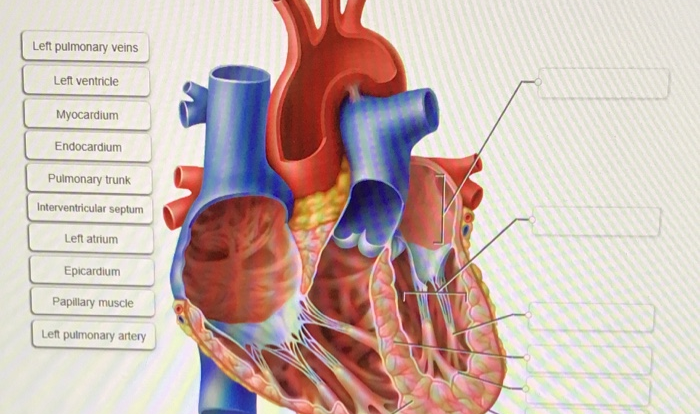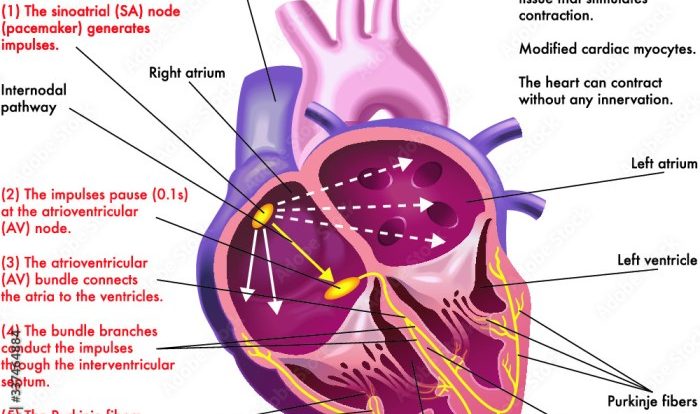Frog dissection pre lab answer key – Embark on an intriguing journey into the world of frog dissection with our comprehensive Frog Dissection Pre-Lab Answer Key. This guide will provide you with a thorough understanding of the topic, ensuring a successful and informative lab experience.
As you delve into the fascinating realm of frog anatomy, you’ll discover the intricate details of the frog’s external and internal structures, gaining valuable insights into its biology and physiology.
Frog Dissection Pre-Lab Introduction
A frog dissection pre-lab is a preparatory exercise designed to enhance your understanding of the frog’s anatomy and the procedures involved in dissection. It helps you familiarize yourself with the safety protocols, the tools required, and the steps of the dissection process.
Following safety protocols is crucial during dissection to minimize risks and ensure a safe learning environment. These protocols include wearing appropriate attire, handling sharp instruments carefully, and disposing of biological materials responsibly.
Frog’s Anatomy Overview, Frog dissection pre lab answer key
The frog’s body is divided into three main regions: the head, trunk, and limbs. The head houses the brain, eyes, nostrils, and mouth. The trunk contains the internal organs, such as the heart, lungs, liver, and digestive system. The limbs consist of two pairs of legs, used for movement and support.
During the dissection, you will examine various organs, including the respiratory, digestive, circulatory, and reproductive systems. Understanding the structure and function of these organs will provide valuable insights into the biology and physiology of frogs.
Materials and Equipment
To conduct a successful frog dissection, it is essential to have the necessary materials and equipment. Each component plays a crucial role in facilitating the exploration of the frog’s anatomy. Understanding their functions and proper usage will ensure an efficient and informative dissection experience.
Dissection Tools
- Scalpel:A sharp, precision instrument used for making precise incisions and separating tissues.
- Scissors:Used for cutting through tougher tissues, such as muscles and cartilage.
- Forceps:Tweezers-like instruments used for grasping and manipulating delicate structures.
- Probes:Thin, pointed instruments used for gently probing and separating tissues.
Other Essential Materials
- Preserved Frog Specimen:The primary subject of the dissection, preserved to maintain its anatomical integrity.
- Dissection Tray:A shallow, waterproof container used to hold the frog specimen and dissection tools.
- Dissecting Pins:Used to secure the frog to the dissection tray, ensuring stability during the dissection.
- Magnifying Glass:Optional, but recommended for examining fine anatomical details.
Setting Up the Dissection Station
Prior to beginning the dissection, it is important to set up the dissection station properly. This involves:
- Selecting a well-lit, clean, and spacious work area.
- Arranging the dissection tray in the center of the work area.
- Positioning the frog specimen in the dissection tray and securing it with dissecting pins.
- Organizing the dissection tools around the tray, ensuring easy access during the procedure.
External Anatomy
The external anatomy of a frog provides insights into its adaptation to its environment. Its body shape, skin texture, and coloration contribute to its survival and camouflage.The frog’s body is typically dorsoventrally flattened, allowing it to navigate through water and vegetation.
Its skin is smooth and moist, aiding in respiration and reducing water loss. The coloration of frogs varies widely depending on species, but it often serves as camouflage, blending with the surrounding environment.
Major External Structures
Head:
- Contains sensory organs (eyes, nostrils, ears)
- Bears the mouth, used for feeding and respiration
Limbs:
Forelimbs
shorter, used for grasping and locomotion
Hindlimbs
longer, adapted for jumping and swimmingOrgans:
Cloaca
a single opening for the digestive, reproductive, and urinary systems
Vent
the external opening of the cloaca
Tympanum
the eardrum, located behind each eye
Measuring the Frog
Body Length:
Measure from the tip of the snout to the tip of the urostyle (tailbone).
Mass:
Weigh the frog using a digital scale or triple beam balance.
Internal Anatomy
The internal anatomy of a frog is complex and fascinating, consisting of various organs and systems that work together to maintain the frog’s life functions. By understanding the internal anatomy of a frog, we gain valuable insights into the intricate workings of this amphibian creature.
The internal organs of a frog can be broadly classified into four main systems: the digestive system, respiratory system, circulatory system, and nervous system. Each of these systems plays a specific role in ensuring the survival and well-being of the frog.
Digestive System
- The digestive system is responsible for the breakdown and absorption of nutrients from food. It consists of the mouth, esophagus, stomach, small intestine, large intestine, and cloaca.
- The mouth is the opening through which food enters the digestive tract. It is lined with small, sharp teeth that help to grip and tear food.
- The esophagus is a short tube that connects the mouth to the stomach. It helps to transport food down into the stomach.
- The stomach is a muscular organ that secretes digestive enzymes and acids to break down food into smaller molecules.
- The small intestine is a long, coiled tube where most of the digestion and absorption of nutrients takes place.
- The large intestine is responsible for absorbing water and electrolytes from the remaining food material.
- The cloaca is a common chamber that receives waste products from the digestive, urinary, and reproductive systems.
Respiratory System
- The respiratory system is responsible for the exchange of oxygen and carbon dioxide between the frog and its environment. It consists of the lungs, skin, and buccal cavity.
- The lungs are two sac-like organs located in the chest cavity. They are lined with thin, moist membranes that allow for the diffusion of oxygen and carbon dioxide.
- The skin is also an important respiratory organ in frogs. It is thin and moist, allowing for the diffusion of gases.
- The buccal cavity, or mouth cavity, is also involved in respiration. It is lined with a thin, moist membrane that allows for the exchange of gases.
Circulatory System
- The circulatory system is responsible for the transport of blood throughout the body. It consists of the heart, blood vessels, and blood.
- The heart is a muscular organ that pumps blood throughout the body. It consists of two atria and one ventricle.
- The blood vessels are a network of tubes that carry blood away from the heart and back to the heart.
- The blood is a fluid that transports oxygen, nutrients, and waste products throughout the body.
Nervous System
- The nervous system is responsible for coordinating the activities of the body. It consists of the brain, spinal cord, and nerves.
- The brain is the central control center of the body. It receives information from the senses and sends signals to the muscles and organs.
- The spinal cord is a long, thin tube of nerve tissue that runs down the back of the body. It carries messages between the brain and the rest of the body.
- The nerves are bundles of nerve fibers that carry messages to and from the brain and spinal cord.
Dissection Procedure
Dissection involves carefully examining the internal structures of an organism. In this pre-lab, we will focus on the dissection of a frog, a widely used model organism in biology. To ensure a successful and safe dissection, it is crucial to follow the steps Artikeld below.
Materials and Equipment
- Preserved frog specimen
- Dissecting tray
- Dissecting tools (scalpel, scissors, forceps)
- Probe
- Gloves
- Safety goggles
Safety Precautions
Before beginning the dissection, it is essential to adhere to the following safety guidelines:
- Wear gloves and safety goggles throughout the dissection.
- Handle sharp instruments with care and avoid cutting yourself.
- Dispose of dissection materials properly, following laboratory protocols.
- Maintain a clean and organized workspace.
Step-by-Step Dissection Guide
1. External Examination
Before dissecting the frog, carefully observe its external features. Note the shape, size, and color of the body. Identify the head, limbs, and major organs visible from the outside.
2. Ventral Incision
Using a scalpel, make a ventral incision along the midline of the frog’s belly. Begin the incision at the tip of the jaw and extend it to the cloaca. Carefully cut through the skin and muscles, avoiding damage to internal organs.
3. Opening the Body Cavity
Once the ventral incision is complete, gently spread open the body cavity using forceps. Avoid tearing the organs or blood vessels.
4. Identifying Internal Organs
Locate and identify the major internal organs, including the heart, lungs, liver, stomach, intestines, and reproductive organs. Use a probe to gently separate and examine the organs.
5. Removing Organs
To obtain a clearer view of the internal structures, carefully remove the organs one by one. Use scissors or forceps to cut and detach the organs, taking care not to damage surrounding tissues.
6. Examining the Digestive System
Focus on the digestive system by examining the esophagus, stomach, intestines, and associated structures. Trace the path of food through the digestive tract.
7. Examining the Respiratory System
Identify the lungs and associated structures, such as the trachea and bronchi. Observe the structure and function of the respiratory system.
8. Examining the Circulatory System
Locate the heart, blood vessels, and associated structures. Trace the flow of blood through the circulatory system.
9. Examining the Reproductive System
Identify the reproductive organs, including the gonads, oviducts, and associated structures. Note any differences between male and female frogs.
10. Cleaning and Disposal
After completing the dissection, thoroughly clean all dissection tools and materials. Dispose of the frog specimen and dissection waste according to laboratory protocols.
Data Collection and Analysis
During the dissection, a range of data should be collected to enhance understanding of frog anatomy and physiology. This data can be recorded in various ways, including tables and charts, for effective analysis.
The data collected during the dissection can provide valuable insights into the structure and function of the frog’s organs and systems. This information can be used to understand the adaptations that frogs have developed to survive in their environment, and to compare their anatomy and physiology to other animals, including humans.
Recording and Analyzing Data
The data collected during the dissection can be recorded in a variety of ways, including:
- Tables: Tables are a useful way to organize and present data, allowing for easy comparison of different variables.
- Charts: Charts, such as bar graphs or pie charts, can be used to visualize the data and identify trends or patterns.
Once the data has been recorded, it can be analyzed to identify any patterns or trends. This analysis can be used to draw conclusions about the frog’s anatomy and physiology.
Significance of the Data
The data collected during the dissection can be used to understand the frog’s anatomy and physiology. This information can be used to:
- Identify the different organs and systems of the frog.
- Understand the function of each organ and system.
- Compare the frog’s anatomy and physiology to other animals, including humans.
By understanding the frog’s anatomy and physiology, we can gain a better understanding of the natural world and the diversity of life on Earth.
Conclusion
The frog dissection pre-lab has provided a comprehensive overview of the anatomy and dissection procedures of a frog. The key findings include an understanding of the external and internal anatomy of the frog, as well as the proper techniques for dissection.
It is crucial to adhere to safety protocols and ethical considerations throughout the dissection process. By following these guidelines, students can ensure a safe and respectful learning experience. The pre-lab also emphasizes the importance of proper disposal of dissection materials to minimize environmental impact.
Suggestions for Further Study
To delve deeper into the topic of frog anatomy, students may consider pursuing further studies in the following areas:
- Comparative anatomy of different frog species to identify similarities and variations in their structures and adaptations.
- Physiological studies to investigate the functions of various organ systems in frogs, such as the digestive, respiratory, and circulatory systems.
- Ecological studies to examine the role of frogs in their ecosystems, including their interactions with other organisms and their contributions to biodiversity.
Essential FAQs: Frog Dissection Pre Lab Answer Key
What is the purpose of a frog dissection pre-lab?
A frog dissection pre-lab provides essential background information and instructions, ensuring a safe and successful dissection.
What safety protocols should be followed during a frog dissection?
Wear gloves, safety glasses, and a lab coat. Use sharp instruments carefully and dispose of them properly.
What are the major external structures of a frog?
Head, limbs, eyes, nostrils, mouth, skin
What are the major internal organs of a frog?
Heart, lungs, liver, stomach, intestines
How do I dissect a frog?
Follow the step-by-step instructions provided in the Frog Dissection Pre-Lab Answer Key.



